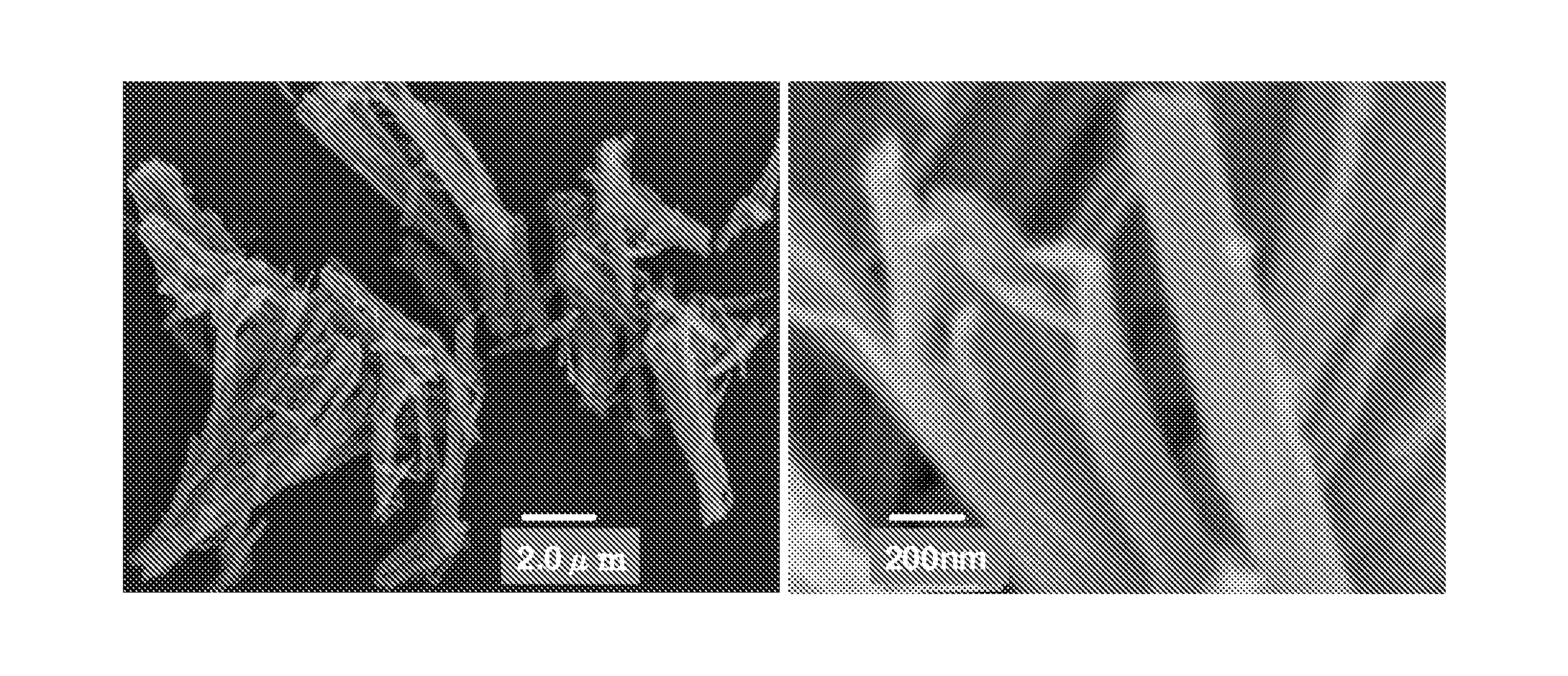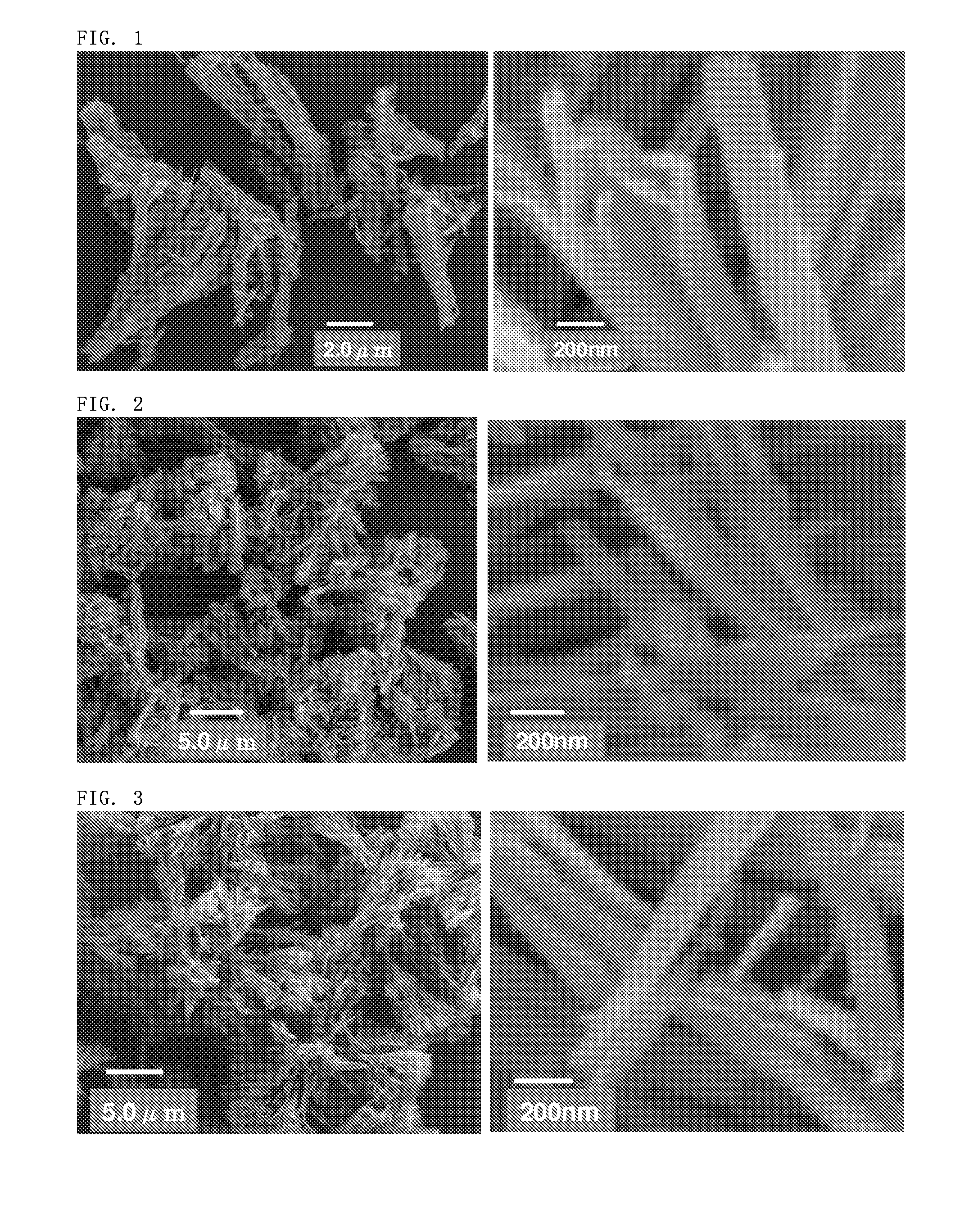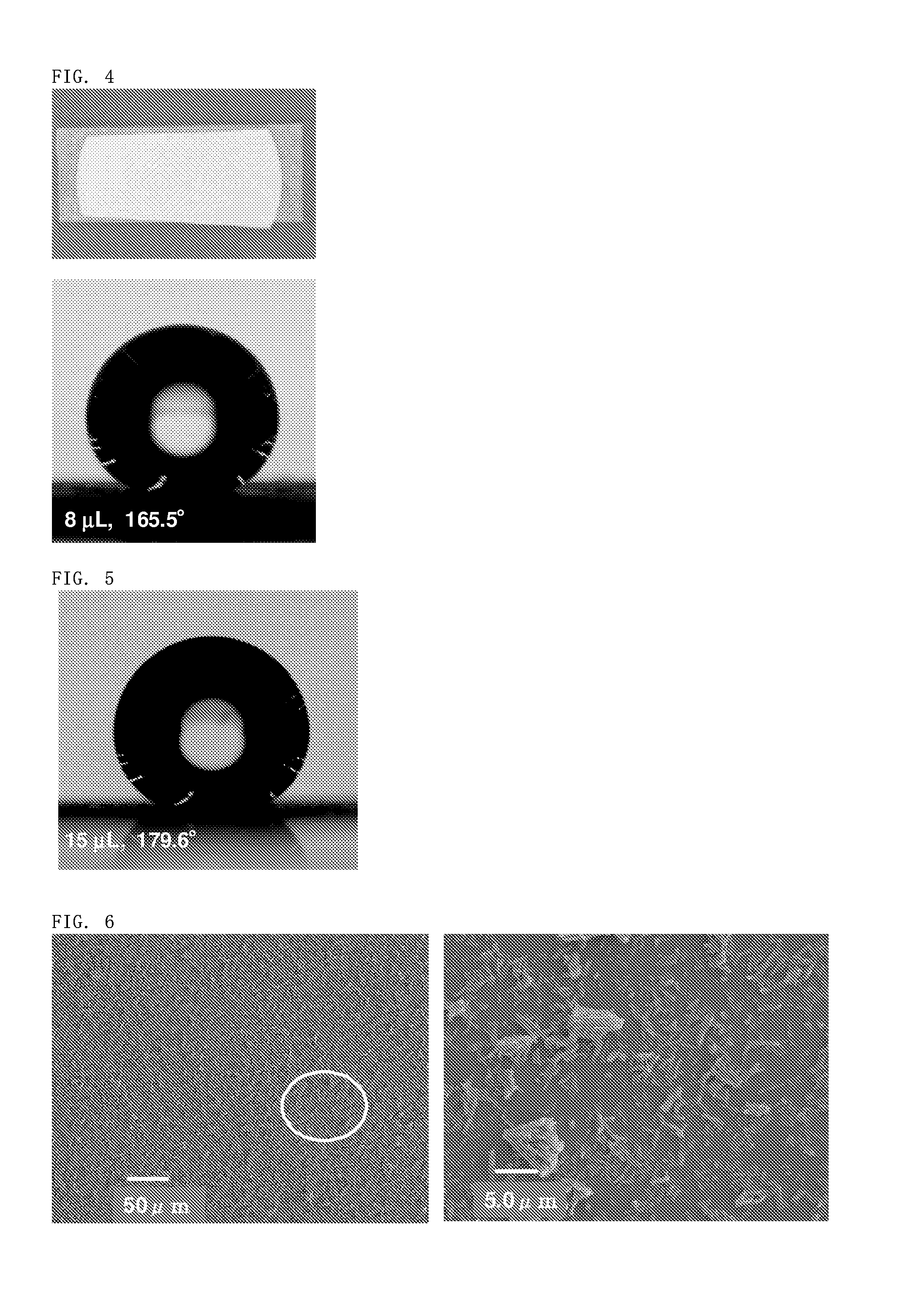Superhydrophobic powders, structure with superhydrophobic surface, and processes for producing these
a superhydrophobic powder and superhydrophobic surface technology, applied in the field of superhydrophobic powders, can solve the problems of high cost, difficult to exhibit superhydrophobicity, and complex surface treatment process
- Summary
- Abstract
- Description
- Claims
- Application Information
AI Technical Summary
Benefits of technology
Problems solved by technology
Method used
Image
Examples
synthesis example 1
[0143][Synthesis of aggregates of organic / inorganic composite nanofibers (I)]
[0144]Powders having different shapes were prepared by the methods disclosed in patent literatures (Japanese Unexamined Patent Application Publication No. 2005-264421, Japanese Unexamined Patent Application Publication No. 2005-336440, Japanese Unexamined Patent Application Publication No. 2006-063097, and Japanese Unexamined Patent Application Publication No. 2007-051056).
[0145]Five grams of commercially available polyethyloxazoline (number-average molecular weight: 500,000, average degree of polymerization: 5,000, manufactured by Aldrich) was dissolved in 20 mL of a 5M aqueous hydrochloric acid solution. The solution was heated to 90° C. in an oil bath, and was stirred at the temperature for 10 hours. Next, 50 mL of acetone was added to the reaction solution to completely precipitate the polymer. The precipitate was filtered and washed with methanol three times to obtain a white polyethyleneimine powders....
synthesis example 2
[0150][Synthesis of aggregates of nanofibers (II) containing silica as main constituent component]
[0151]Five grams of the powders (I1) obtained in Synthesis Example 1 were heated in an electric furnace at 600° C. for two hours under the condition of introducing air to remove polyethyleneimine contained in the powders (I1). Thus, white powders (II1) were obtained. The specific surface area of the powders (II1) was 187 m2 / g. FIG. 2 shows SEM photographs of the powders (II1). It was suggested that the structure of nanofibers after calcining did not change.
example 1
[0152][Synthesis of superhydrophobic powders 1]
[0153]First, 50 mL of an ethanol solution of 2% ammonia and 5 mL of a chloroform solution of 20% decyltrimethoxysilane (DIMS) were mixed, and 0.5 g of the powders (I1) were added to the mixed solution. The resulting mixture was stirred at room temperature for 24 hours. The reaction mixture was filtered, and the resulting powders were then washed with ethanol three times. The powders after drying floated on the water surface without being submerged under water at all.
[0154]This was completely different from the tendency of the powders (I1) before the hydrophobizing treatment, which became completely submerged in water.
[0155]The prepared powders were adhered to a double-sided tape to form a surface composed of the powders, and the contact angle of the surface was then measured. The contact angle with water was 177.5°. It was strongly suggested that the surface was superhydrophobic when in the form of a film composed of the powders. Tease ...
PUM
| Property | Measurement | Unit |
|---|---|---|
| size | aaaaa | aaaaa |
| thickness | aaaaa | aaaaa |
| aspect ratio | aaaaa | aaaaa |
Abstract
Description
Claims
Application Information
 Login to View More
Login to View More - R&D
- Intellectual Property
- Life Sciences
- Materials
- Tech Scout
- Unparalleled Data Quality
- Higher Quality Content
- 60% Fewer Hallucinations
Browse by: Latest US Patents, China's latest patents, Technical Efficacy Thesaurus, Application Domain, Technology Topic, Popular Technical Reports.
© 2025 PatSnap. All rights reserved.Legal|Privacy policy|Modern Slavery Act Transparency Statement|Sitemap|About US| Contact US: help@patsnap.com



